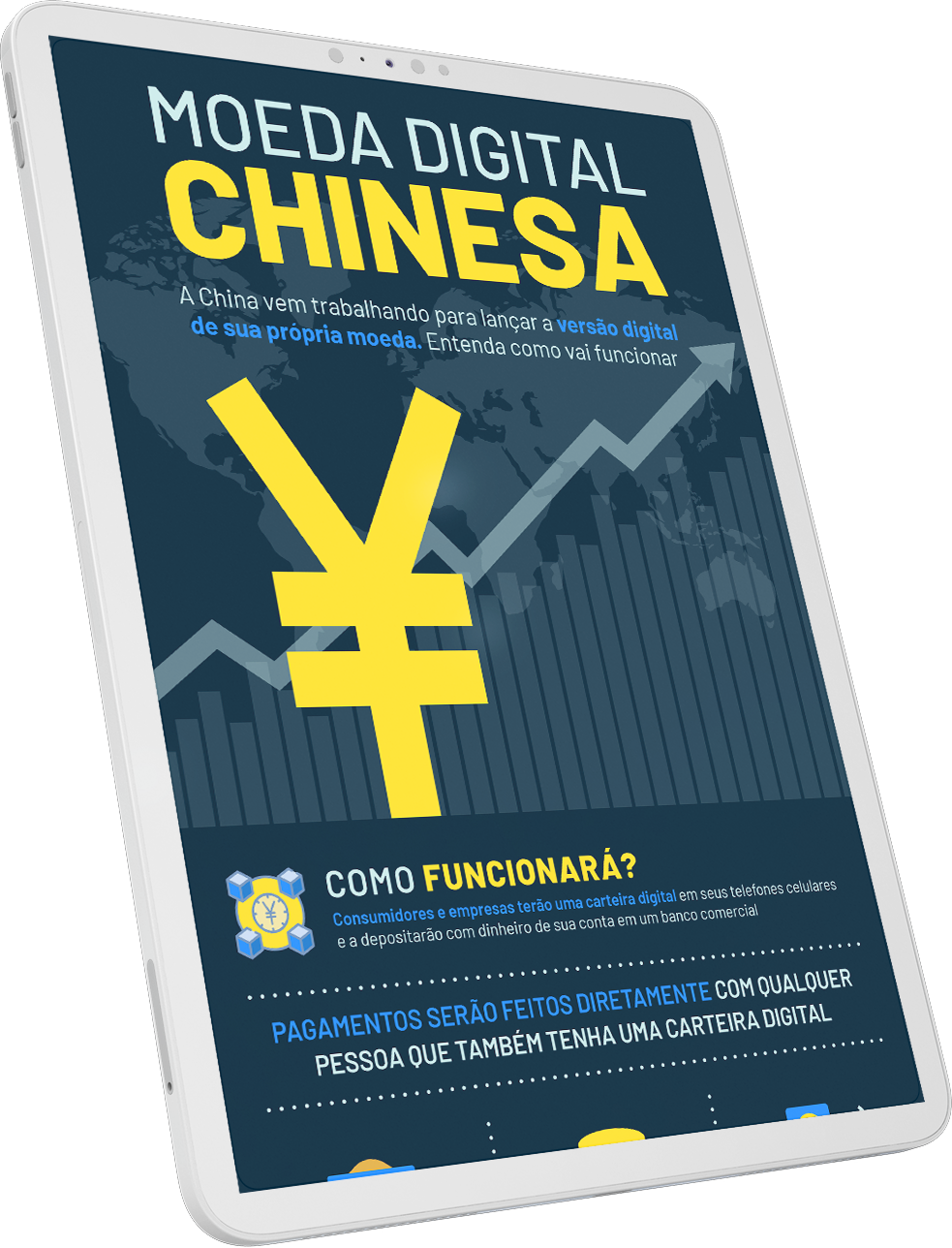
CHINA’S DIGITAL CURRENCY
It’s no surprise that the Asian giant is already a giant in the digital payments market, being one of the countries closest to becoming a cashless society. Now, with the creation of its digital currency, China can transform – once again – the way it makes payments and bring about change with a global reach.
Understand, in this infographic, how the Chinese digital currency will work and what can change in international trade!
- An overview of the “cashless” status of the Chinese economy
- Details of how digital currency works
- Yuan’s global reach
- Main differences between digital yuan and Bitcoin
- And much more!
Informe seus dados
Para baixar o conteúdo gratuitamente preencha o formulário a seguir
The renminbi is the 8th most traded currency internationally.
+1 billion Chinese already use mobile payment services.
Unlike a cryptocurrency, the digital yuan is issued by the Central Bank of China.

China has been conducting pilot tests with its digital currency in different cities across the country since April 2020 and is on track to officially launch it at the 2022 Winter Olympics in Beijing.
The digital yuan, also called DCEP or e-yuan, emerged as an alternative to existing private payment channels (Alipay and WeChat Pay) and could encourage the internationalization of the Chinese renminbi and even, according to speculation, produce the necessary conditions for the overtaking the US dollar as the world’s reserve currency.
Seeking to facilitate the use and adherence of citizens to the currency, transactions can be carried out in seconds in different ways: via application, NFC (a mode that allows offline transfers), biometric identification, and physical-digital wallet.
The issuance of a digital currency, in addition to reinforcing the digitization of physical money throughout the country, will allow greater state control over financial transactions, since its issuance is the responsibility of the Chinese Central Bank.
Sobre
Quem somos
Trabalhe conosco
Conteúdos
Infográficos
Relatórios
Blog
Conteúdos
Capacitação
Soluções corporativas
Conteúdos
Apoio a investimentos
Missões Tech China
Contato
Quem somos
Trabalhe conosco
Newsletter
